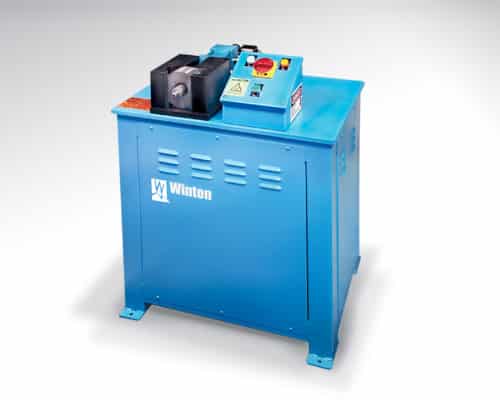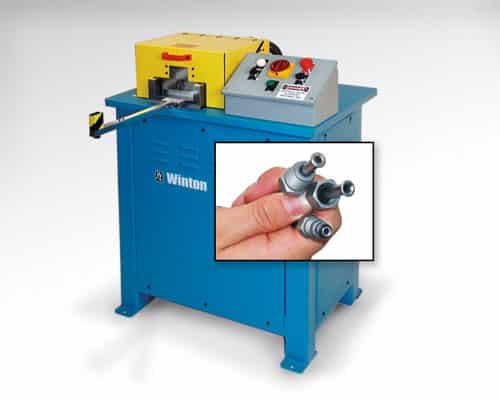End Formers
Segmentated Finger Type Expander
Ram Type End Formers
Sometimes focusing on the tube’s function rather than the forming method can lead you to select an end forming method that optimizes the part cost, particularly if the opportunity involves a new part. The ways to form the tube end boil down to a few basic methods, so understanding their capabilities and limitations is critical to selecting the best process for a particular part. Thinking about creative ways to employ the process can help to improve product performance and reduce process cost. End Forming starts with understanding and narrowing down the tube end foming process. Are you going to need to use ram or segmented tooling. Your tooling choices help form the ID, the OD, or both; and the operation can be manual or CNC. Understanding the processes and their capabilities are the keys to choosing the best one for your application.
The basic end forming methods are segmented tool sizing, ram forming, rotary forming, roll forming, and spinning. The latter three have specific advantages in working around the circumference of a tube, especially where sharp angles and radical diameter changes require working the tube more gradually. The first two work the whole circumference at one time. While they provide a quicker forming cycle, they are limited in their range of applications.
One of the most common types of end forming is a ram type end former. Most often the ram type end forming process securely holds a tube static in a set of clamp dies while a ram tool forms the end of the tube. As the ram tool advances towards the static tube held captive by the clamp dies, the ram tool causes the tubing to cold flow. The path of flow is the path of least resistance. The ram tool simply captivates the end of the tube and then compresses it towards the clamp dies. In this case the unsupported section of the tube between the clamps and the ram tool buckles under the compressive loading on the tube thus forming the bead shown. In this particular case, the surface finish of the ram tool’s mating features are not that critical. Likewise, lubricant in this case is not critical.
Winton offer several modes and sizes of end forming equipment. The base units are either ram type or expanding type.



